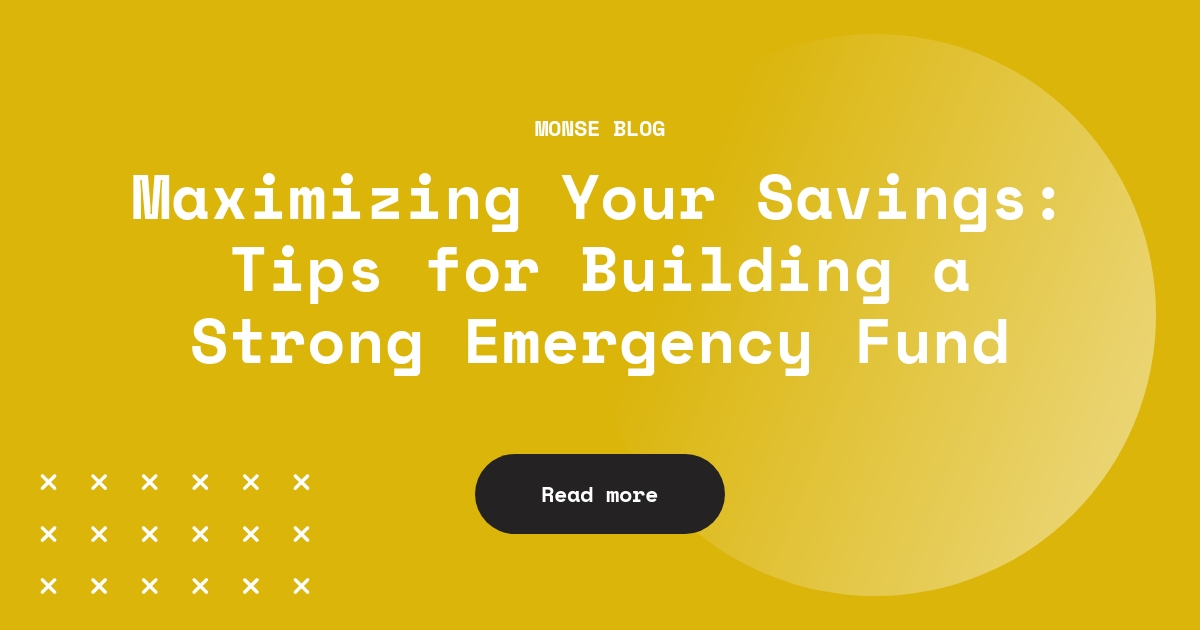Maximizing Your Savings: Tips for Building a Strong Emergency Fund

Don't let unexpected expenses derail your financial goals. Discover our top strategies for building a robust emergency fund, including how much to save and where to keep your money.
An emergency fund is a crucial part of any financial plan. It's a safety net that can help you avoid debt and financial stress when unexpected expenses arise.
However, building a strong emergency fund can be challenging, especially if you're living paycheck to paycheck. In this article, we'll share some tips for maximizing your savings and building a robust emergency fund.
How much should you save?
The general rule of thumb is to save three to six months' worth of living expenses. However, your personal situation may require more or less than that. Factors to consider when determining your emergency fund goal include your job security, health, and family situation. For example, if you're self-employed or have a high-deductible health plan, you may want to save more.
Where to keep your emergency fund
When it comes to emergency funds, accessibility and safety are key. You want to keep your money in an account that's easy to access in case of an emergency, but also safe from market fluctuations. Some options to consider include savings accounts, money market accounts, and CDs. Savings accounts are the most accessible, but they offer lower interest rates. Money market accounts and CDs may offer higher interest rates, but they may have penalties for early withdrawals.
Strategies for saving
The first step to building a strong emergency fund is to make saving a priority in your budget. Look for ways to cut expenses and increase your savings rate. For example, you could reduce your dining out budget, cancel subscriptions you don't use, or negotiate your bills. You can also consider increasing your income by taking on a side hustle or asking for a raise.
Building your emergency fund
Building an emergency fund takes time and discipline. The key is to get started and stay motivated. Set a savings goal and break it down into smaller, achievable milestones. Track your progress and celebrate your successes along the way. If you receive a windfall, such as a tax refund or a bonus, consider putting it towards your emergency fund.
When to use your emergency fund
Your emergency fund should be used for true emergencies only. These include unexpected expenses such as medical bills, car repairs, or job loss. It's important to have a plan in place for how and when to use your emergency fund. For example, you may want to prioritize paying for essential expenses first, such as rent and utilities, before using your emergency fund for discretionary expenses.
Building a strong emergency fund is an essential part of any financial plan.
By following these tips, you can maximize your savings and prepare for unexpected expenses.
Remember, building an emergency fund takes time and discipline, but it's worth it for the peace of mind it can provide. Start small, stay consistent, and celebrate your successes along the way.
